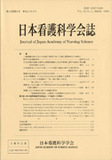Japanese
English
- 販売していません
- Abstract 文献概要
- 参考文献 Reference
- サイト内被引用 Cited by
要約
本研究の目的は,看護職がとらえている在宅高齢者の閉じこもり現象の構造を明らかにし,この現象に影響している因子を抽出することである.地域で働く看護職23名にADLが低下・改善したケースについて半構成的面接を行い,その逐語録をデータとし,質的分析を実施した.
その結果,閉じこもり現象は行動範囲が家や寝床に限られている状態をさし,さらに移動能力,生活行動の活動性にて関係づけられた.また,移動能力を十分に活用した行動範囲を保持していない「閉じこもり」と,移動能力が低く行動範囲が家に限られている「閉じこめられ」があることが示された.さらに,行動範囲が家に限られていても生活行動の活動性が高い場合は,閉じこもり現象を呈してはいないことが示唆された.閉じこもり現象の影響因子には,障害の受けとめ方,意欲,うつ症状,住居環境,人との関わり,サービス利用,起こす・連れ出す働きかけ,家族の介護機能が抽出された.
Abstract
“TOJIKOMORI”in English means shutting oneself in a room, or house, something akin to withdrawal in general. It is pointed out that“TOJIKOMORI”syndrome among home elderly results in mobility decline. The purpose of this study is to examine the structure of the“TOJIKOMORI”and extract factors that affect that the“TOJIKOMORI”phenomenon from the perspective of nurses.
Twenty-three home health nurses and public health nurses were conducted the semi-structured interview about home elderly who declined or improved in ADL. Transcripts were analyzed using the qualitative methods.
Results showed as follows. The“TOJIKOMORI”phenomenon was defined as disabled elderly who were bound to house or bed. Also mobility and the variety of daily activities contributed to the structure of the“TOJIKOMORI”phenomenon.
Two kinds of“TOJIKOMORI”were suggested by the data:“TOJIKOMORI”in a narrow sense was defined as housebound- inactive elderly, though their mobility level was high.“TOJIKOMERARE”(It means the passive of“TOJIKOMORI”) was identified as limitation of daily life within house due to disability. But in some cases, elderly were confined their home, they engaged in various activities. That is not classified as the“TOJIKOMORI”phenomenon.
Factors related to the“TOJIKOMORI”phenomenon among elderly were disability acceptance, autonomy, depression, housing environment, social networks, utilization of formal services, approaches for encouraging elderly to sit or taking them out, and family caregiving function.
Copyright © 1999, Japan Academy of Nursing Science. All rights reserved.


